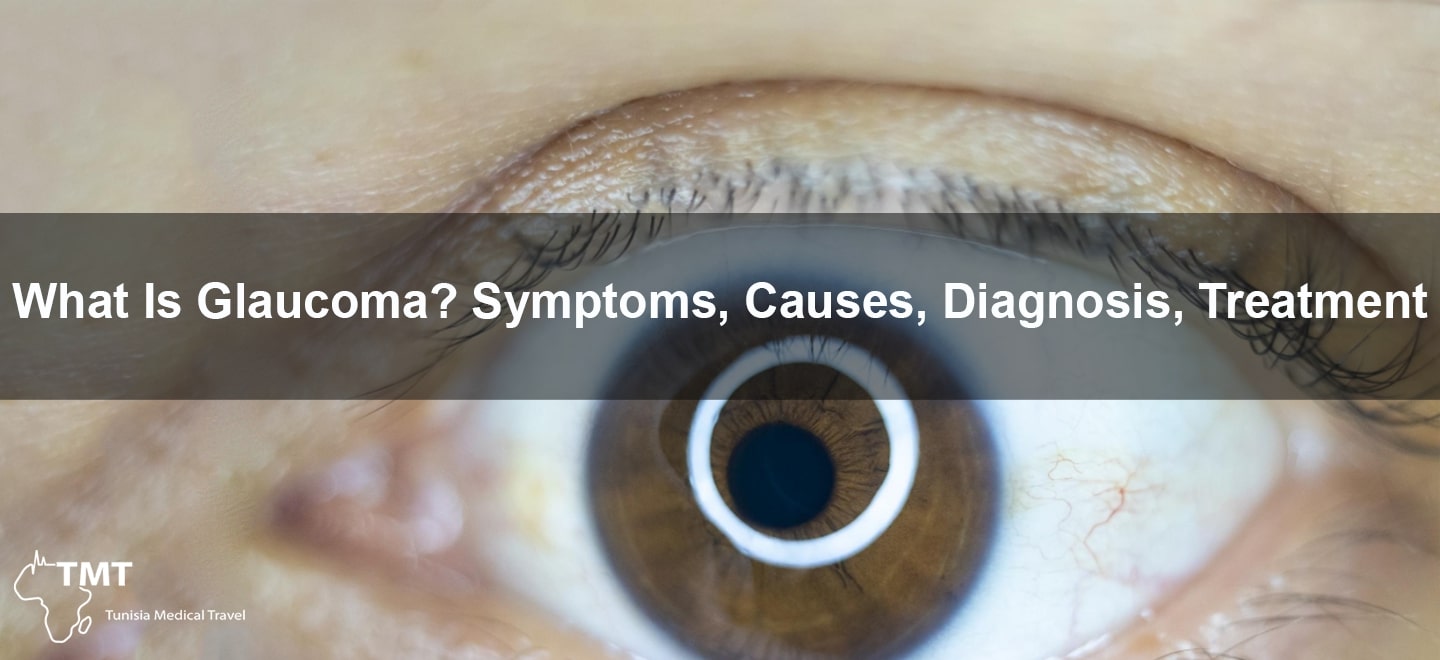What Is Glaucoma? Symptoms, Causes, Diagnosis, Treatment
What Is Glaucoma? Symptoms, Causes, Diagnosis, Treatment
Glaucoma is a group of eye conditions that damage the optic nerve, leading to gradual vision loss and, if left untreated, eventual blindness. It often occurs when there is an increase in intraocular pressure (IOP), the fluid pressure inside the eye. This increased pressure can damage the optic nerve, which is crucial for good vision.
What Is Glaucoma?
Glaucoma is a complex eye disease that can affect anyone, regardless of age or health. It’s often referred to as the « silent thief of sight » because it usually progresses slowly and without any noticeable symptoms until the later stages. The condition is caused by a buildup of aqueous humor, the fluid that flows in and out of the eye, creating pressure.
What Causes Glaucoma?
One key factor associated with glaucoma is the imbalance of nerve growth factors, essential elements for the maintenance and survival of nerve cells, including those in the eye. When the delicate balance of these growth factors is disrupted, it can lead to optic nerve damage, a common characteristic of glaucoma. Moreover, some individuals might have a higher risk due to specific anatomical features like a narrow angle definition, which can impede the normal flow of eye fluid, causing pressure buildup. It’s essential to have regular eye examinations, especially for individuals with a family history of glaucoma or other risk factors such as age and certain medical conditions. Apart from genetic factors, lifestyle and environmental elements also play a role. Additionally, the prolonged use of electronic devices and can contribute to eye problems.
Types of Glaucoma
There are several types of glaucoma, including open-angle glaucoma and angle-closure glaucoma. Open-angle glaucoma is the most common type and develops slowly over time. The drainage angle between the iris and cornea remains open, but the trabecular meshwork is partially blocked, leading to increased intraocular pressure. Angle-closure glaucoma, on the other hand, occurs when the iris blocks the drainage angle in the eye, causing a sudden increase in intraocular pressure. This type of glaucoma is a medical emergency and requires immediate treatment to prevent vision loss.
What Are Common Glaucoma Symptoms?
Glaucoma is a condition that often develops silently, creeping in without noticeable symptoms until it reaches an advanced stage. Nevertheless, there are specific common signs associated with glaucoma that individuals should recognize. One of the key symptoms is blurred vision, especially in peripheral vision, as glaucoma gradually impairs eyesight. Additionally, people with glaucoma might experience seeing halos or rainbow-colored rings around lights, a phenomenon particularly apparent in low-light settings. Redness in the eyes is another indicator, caused by increased pressure resulting from the condition. In some severe cases, glaucoma can lead to excruciating eye pain, accompanied by nausea and vomiting. Moreover, glaucoma can result in tunnel vision, where peripheral vision is lost, leaving only the central vision intact.
Who is at risk for Glaucoma?
Certain individuals are at higher risk for developing glaucoma. These include people with a family history of glaucoma, individuals above the age of 60, individuals of African, Hispanic, or Asian descent, and those with medical conditions like diabetes, high blood pressure, and heart disease. Regular eye check-ups are especially vital for individuals falling into these categories to ensure early detection and timely intervention.
Glaucoma Diagnosis
One of the key diagnostic tools for glaucoma is the measurement of intraocular pressure, which helps optic l’hay specialists assess the risk of optic nerve damage. Regular eye examinations, especially for those at higher risk, are vital. Certain diagnostic centers like Diagnostic Centers of America specialize in comprehensive eye exams, ensuring a thorough assessment for any signs of glaucoma. Another area of research that holds promise in glaucoma diagnosis and treatment is the use of nerve growth factors. These factors are being studied for their potential to protect and repair the optic nerve, offering hope for improved treatments in the future.
In addition to conventional diagnosis methods, innovative technologies have emerged, such as Sure Flap, a device designed to monitor intraocular pressure at home, providing valuable data for both patients and doctors. Moreover, advancements in rainbow vision technology have enabled more precise diagnosis by mapping the visual field, aiding in the early detection of glaucoma.
Glaucoma Treatment
Glaucoma treatment is crucial to managing the condition and preventing vision loss. There are various methods used to treat glaucoma, including eye drops designed to reduce intraocular pressure and slow down the progression of the disease. Other treatments involve surgeries like a o surgery to improve drainage and decrease pressure in the eye. One innovative approach to glaucoma treatment involves the use of nerve growth factors. These factors stimulate the growth and survival of nerve cells, potentially protecting the optic nerve from damage. Research in this area has led to the development of new medications and therapies, such as my easy optic and first optic, which aim to preserve vision and improve the quality of life for glaucoma patients.
Glaucoma is a serious eye condition that can lead to blindness if not properly managed. It is essential for individuals, especially those at higher risk, to have regular eye check-ups to detect and treat glaucoma in its early stages. Understanding the symptoms, causes, and available treatments is crucial in preserving one’s vision and quality of life.

